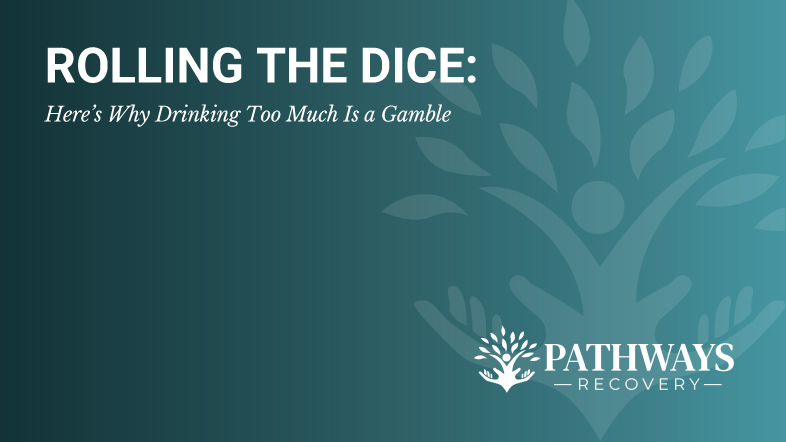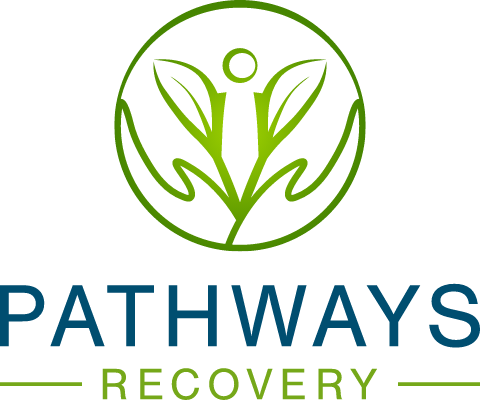Rolling the Dice: Here’s Why Drinking Too Much Is a Gamble
You’ve heard it time and time again: Too much of anything usually isn’t a good thing.
Here in the United States, we have a problem when it comes to consuming too much alcohol.
You’ve heard the stories, whether it was from a local newscast, a family member, or a friend. Or perhaps you have a story to tell about an alcohol-filled night that took a turn for the worse.
Sometimes, it’s easy to forget drinking too much can be dangerous. Not only can it lead to alcohol use disorder (AUD) and other issues, but you can consume enough alcohol to the point of overdose (alcohol poisoning), a potentially serious and sometimes fatal health emergency.
Alcohol Poisoning: What You Should Know
No amount of drunken fun, or whatever you consume alcohol for, is worth more than your health and well-being. That’s why understanding the dangers of too much alcohol and an alcohol overdose, also known as alcohol poisoning, is crucial.
According to the National Institutes of Health (NIH), “An alcohol overdose occurs when there is so much alcohol in the bloodstream that areas of the brain controlling basic life-support functions — such as breathing, heart rate, and temperature control — begin to shut down.”
Symptoms of alcohol poisoning may include:
- Breathing problems
- Slowed heart rate
- Vomiting
- Seizure
- Low body temperature
- Unconsciousness
- Confusion
Alcohol poisoning can also lead to permanent brain damage and can be fatal, the NIH says. Those with alcohol poisoning may also be prone to choking on their own vomit, which also can be fatal.
Anyone can drink alcohol to the point of alcohol poisoning. Much of it comes down to drinking too much too quickly. This includes binge drinking, which is drinking to the point of a blood-alcohol level of 0.08% or higher. For men, this typically occurs after consuming five drinks in a two-hour span, and for women, it’s four drinks in a two-hour span.
Consuming opioids, sleeping pills, and anti-anxiety medications with alcohol can make alcohol poisoning that much more dangerous.
If you believe you or someone you know has alcohol poisoning, call 911 immediately.
Do I Have Alcohol Use Disorder?
Those who drink too much are at risk of developing what’s known as alcohol use disorder (AUD), which is the medical term for what many call alcoholism.
AUD causes strong cravings to drink, anxiety and irritability when not drinking, and the inability to quit drinking once you’ve started.
Right now, around 18 million adults in the United States have AUD, according to the United States National Library of Medicine (NLM).
The NLM lists the following as signs of AUD:
- Drinking more than you intended to
- Strong urges to drink
- Spending a lot of time recovering from drinking
- Finding yourself in dangerous situations as a result of drinking
- Drinking despite the alcohol making you feel anxious or depressed
- Needing to drink more to feel the effects of alcohol
- Wanting to stop drinking but being unable to
- Drinking is causing relationship issues
- Giving up activities you once enjoyed to drink
- Experiencing withdrawal when not drinking
Alcohol withdrawal symptoms include anxiety, depression, nausea, sweating, and irritability. In extreme cases, withdrawal can cause hallucinations (seeing or hearing things that aren’t there), seizures, and fever.
The Differences Between Binge Drinking and Heavy Drinking
As mentioned earlier, binge drinking is drinking to the point of a blood-alcohol level of 0.08% or higher, which for men usually occurs after consuming five drinks in a two-hour span, or for women, four drinks in a two-hour span.
Heavy drinking for men is defined as consuming more than four drinks a day or more than 14 drinks in a week. For women, it’s defined as consuming three drinks or more a day or more than seven drinks a week.
The Centers for Disease Control and Prevention (CDC) reports that one in six U.S. adults binge drinks four times a month. Binge drinking is most common among those 18 to 34 years old.
The CDC says excessive drinking, which includes binge drinking and heavy drinking, is sometimes tied to health problems like certain cancers, high blood pressure, and stroke.
Both binge drinking and heavy drinking can lead to an increased risk of developing AUD. Those on the border of this area should learn about the benefits of quitting drinking.
A Country With a Drinking Problem
Millions of Americans have been affected by alcohol in one way or another. The numbers are alarming.
We’ve already discussed the fact that 18 million adults have AUD. Furthermore, according to the NIH, 414,000 adolescents ages 12-17 had the same disorder in 2019.
Binge drinking is also an issue. That same NIH report says 25.8% of surveyed people ages 18 and older reported binge drinking in the last month.
Hospital visits are also an indicator of just how serious this problem is. Alcohol actually contributes to 18.5% of emergency department visits in the United States.
With 95,000 alcohol-related fatalities in the country annually, alcohol is the third-leading cause of preventable deaths.
Some people should refrain from drinking altogether, including those who:
- Are under the age of 21
- Are recovering from AUD
- Are pregnant or trying to become pregnant
- Are planning to drive
- Are or will be operating machinery
- Are taking medications that are dangerous to mix with alcohol
Is It Time to Seek Treatment?
“Don’t be afraid to ask questions. Don’t be afraid to ask for help when you need it. I do that every day. Asking for help isn’t a sign of weakness, it’s a sign of strength. It shows you have the courage to admit when you don’t know something, and to learn something new.”
— President Barack Obama
Is alcohol causing problems in your personal or professional life? Do you want to stop drinking but can’t? Is alcohol causing you health problems or health scares? If so, seeking professional treatment for alcoholism can help you take your life back.
Battling AUD or alcohol misuse can be difficult. You shouldn’t have to overcome those obstacles alone. In fact, professional treatment can help you remain safe during the detox process and can give you the tools you’ll need to live a life in recovery.
Do not be afraid or ashamed to ask for help. Asking for help takes courage and strength.
Your Path to Recovery Starts Here
Pathways Recovery in Sacramento, CA provides three levels of addiction treatment solutions for those battling an addiction to alcohol, including a detox center, residential treatment, and intensive outpatient treatment.
To learn more, call (916) 735-8377.
Frequently Asked Questions
What happens if you drink too much alcohol?
Drinking too much alcohol can be dangerous, especially if you drink to the point of alcohol poisoning. This occurs when there is so much alcohol in the bloodstream that breathing, heart rate, and temperature control shut down. There’s also an increased risk of choking on your own vomit, which can be fatal.
You can also develop alcohol use disorder, which causes strong cravings to drink, anxiety and irritability when not drinking, and the inability to quit drinking once you’ve started.
How much would you have to drink to get alcohol poisoning?
When it comes to alcohol poisoning, it comes down to drinking too much alcohol in a short amount of time. Each person is different, but if you suspect you or someone you know may be showing symptoms of alcohol poisoning, call 911 immediately as this is a medical emergency. Symptoms include breathing problems, slowed heart rate, vomiting, seizure, low body temperature, unconsciousness, and confusion.
Can you get alcohol poisoning from a bottle of wine?
Depending on how much you drink, drinking too much wine can result in alcohol poisoning. Those who binge drink are at a greater risk of alcohol poisoning. Binge drinking is drinking to the point of a blood-alcohol level of 0.08% or higher. For men, this typically occurs after consuming five drinks in a two-hour span, and it’s four drinks in a two-hour span for women. Five ounces of wine is considered one drink.



